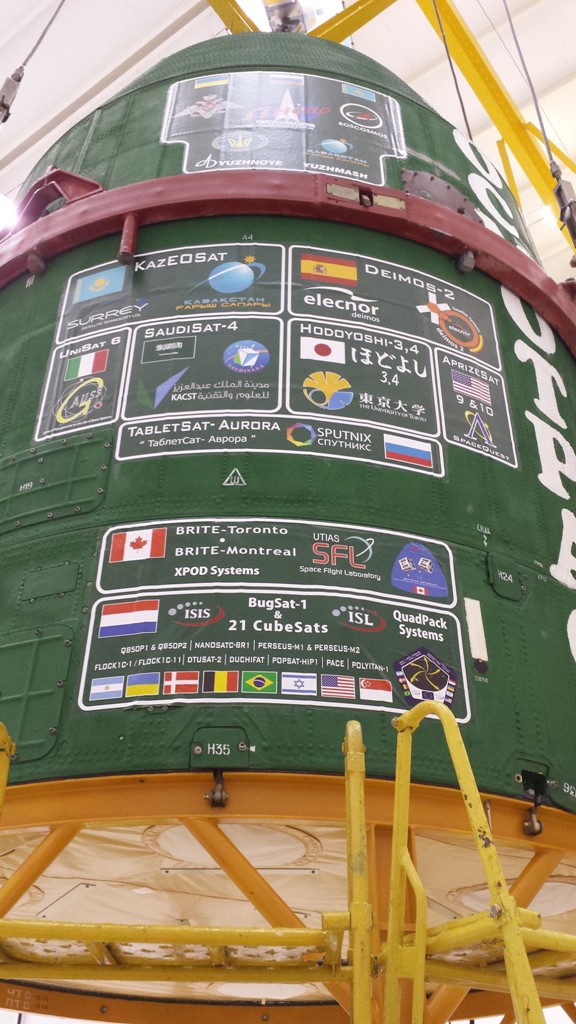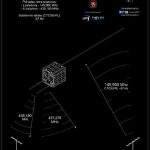
ISC Kosmotras has launched another Dnepr from the Yasny facility in Russia. This launch carried an astounding 37 individual satellites to orbit, eclipsing the record set just last November by the previous Dnepr launch (including AMSAT-UK’s FunCube-1 aka AO-73). The Dnepr is a converted R-36M ICBM, now retasked to launch satellites instead of nuclear warheads. Launch was Thursday, June 19th, 2014 at 19:11:11 UTC.
While a complete listing of the satellites onboard can be found at http://www.zarya.info/Calendar.php and http://www.spaceflight101.com/dnepr-launch-updates—2014-cluster-launch.html , we have compiled a list of the amateur and amateur related payloads below:
| Satellite (Click Link) | Downlink | Mode | Uplink | Mode |
| ANTELSat | 437.575 | 1k2 FSK/AFSK, SSTV | 145.86 | |
| 437.280 | CW | 145.xx | ||
| 2403.000 | 500k GFSK/MSK | |||
| DTUSat-2 | 2401.835 | 1k2-38k4 MSK data | 1268.9 | 9k6 CPFSK |
| DUCHIFAT-1 | 145.980 | 1k2 BPSK or DSB voice | 435.XXX | |
| NanosatC-Br1 | 145.865 | 435.XXX | ||
| PACE | 437.485 | 1k2 AFSK/CW | ||
| PolyITAN | 437.675 | 1k2 AFSK/CW | ||
| POPSAT-HIP1 | 437.405 | 1k2-9k6 CCSDS | ||
| QB50p1 (FUNCube-3) | 145.935-.965 | transponder | 435.035-.065 | transponder |
| 145.815 | 1k2 BPSK/CW | |||
| QB50p2 | 145.880 | 1k2 BPSK/CW | ||
| 145.840 | 9k6 FSK | |||
| UniSat-6 | 437.425 | 9k6 GMSK | 437.425 | 9k6 GMSK |
| BugSat-1 | 437.445 | 9k6 GMSK | ||
| Aurora-Tabletsat | 435.550 | |||
| 436.100 | ||||
| 437.050 | D-STAR Parrot Repeater |
The Unisat-6 team has published preliminary keps that should provide approximate tracking for the first few days at most. Be advised to listened before and after the pass times these keps predict.
UNISAT-6 1 00000U 00000 14169.02083330 .00000831 00000-0 10000-3 0 00009 2 00000 097.9760 063.7300 0060000 225.6000 206.7270 14.69750000000017

